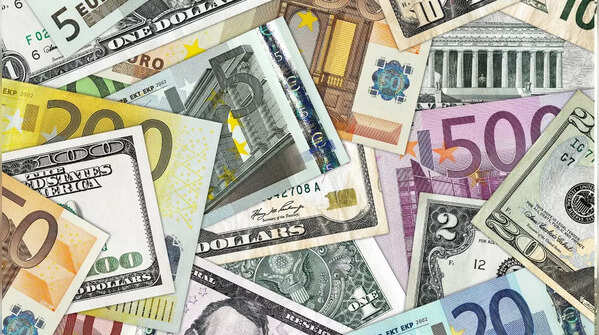From Vietnamese Dong to Cambodian Riel: The 10 least valued currencies in the world

From Vietnamese Dong to Cambodian Riel: The 10 least valued currencies in the world
Currency values vary over time across the globe, as a result of being constantly influenced by factors like economic conditions, inflation, political stability, and market dynamics. While stronger currencies are a representation of stricter economies, weaker currencies come as a result of economic challenges. While weaker currencies can significantly impact trade, investment, and the purchasing power of citizens when compared to other countries across the globe, what if traveling to such nations isn’t a money matter at all? Here are the 10 weakest currencies across the globe.

Iranian Rial
The Iranian Rial has struggled due to longstanding international sanctions and economic mismanagement. Its low value limits foreign trade and investment, making it one of the world's weakest currencies. The reliance on oil exports has heightened the issue, especially with ever-fluctuating global oil prices. Persistent inflation in the nation has reduced the Rial’s purchasing power, affecting everyday life for citizens. Following the end of the Islamic Revolution in 1979, foreign investors began withdrawing from Iran, significantly impacting the country’s economy. Additionally, Iran's nuclear program and the Iran-Iraq war contributed to severe financial strain and heightened political instability across the nation.

Vietnamese Dong
Vietnam's Dong ranks among the weakest currencies but remains stable due to strong manufacturing and export sectors. While the Dong is undervalued internationally, it supports Vietnam's competitive trade advantage. The government has maintained steady economic growth despite global challenges. Low foreign exchange reserves contribute to its weakness, but strategic economic reforms aim to enhance long-term stability. The Dong’s value also represents a developing economy with immense potential.

Sierra Leonean Leone
The Sierra Leonean Leone is an African currency, which is severely impacted by widespread poverty. Africa’s history of corruption and scandals has further increased the economic challenges. Sierra Leone experienced conflicts and a devastating civil war in West Africa, which has majorly weakened the nation's economy and currency value. Additionally, the threat of Ebola continues to affect the population and deplete financial resources which poses many obstacles to achieving economic stability.

Lao or Laotian Kip
The Kip has remained one of the weakest currencies due to Laos’ heavy reliance on imports and limited industrial development. The nation's economic challenges, including external debt and trade deficits, impact Kip's value. Efforts to enhance tourism and regional trade have shown promise but haven't exponentially strengthened the currency yet. To curb this, a planned railway connecting Beijing to Laos has the potential to attract investors to this small yet strategically positioned nation. This infrastructure project could bolster trade and tourism, injecting much-needed capital into the economy.

Indonesian Rupiah
The Rupiah’s low value is a result of Indonesia's historical economic crises and currency devaluation. Although the country has made progress with its growing economy and strong export industries, the Rupiah has struggled to compete with stronger global currencies. The devaluation of the Indonesian Rupiah can be reasoned to several factors, including a decline in the nation's foreign exchange reserves. Indonesia’s heavy reliance on exports makes it particularly vulnerable to fluctuations in global commodity prices. A drop in these prices has also reduced the currency’s value.

Uzbekistani Som
The Som suffers from limited convertibility and an underdeveloped financial market. Economic isolation and a lack of foreign direct investment have also kept it weak. Uzbekistan is highly dependent on agriculture and gold exports which makes it vulnerable to global price fluctuations. However, recent changes have aimed to modernize the economy and attract foreign investment, which will resultantly improve monetary stability.

Guinean Franc
The Guinean Franc struggles due to political instability and a reliance on exports like bauxite and gold. Poor infrastructure and limited industrialization in the nation have weakened the currency. Inflation and a lack of strong fiscal policies increase the challenges. Despite these issues, Guinea has huge resource potential and if the right efforts are put into this direction, it could attract investment and could eventually stabilize the Franc.

Paraguayan Guarani
The Guarani is a weak currency primarily due to Paraguay’s small, agriculture-based economy. Dependency on soybean exports and fluctuations in global commodity prices impact its stability. Limited industrialization and infrastructure have also played a role in its low value. Paraguay's economy is facing a severe downturn marked by soaring inflation, rising unemployment, prevalent poverty, and persistent corruption, all of which have negatively impacted the value of its currency.

Cambodian Riel
The Cambodian Riel is one of the world’s cheapest currencies due to limited usage in domestic markets where the US dollar dominates. Cambodia’s economic dependency on tourism and agriculture makes the currency more volatile. Weak infrastructure and corruption have further reduced the growth. In 2020, the National Bank of Cambodia announced plans to phase out the widespread circulation of one, two, and five-dollar notes. This aimed not only to reduce dependency on smaller denominations of foreign currency but also to boost demand for the riel, which had been struggling with depreciation.

Ugandan Shilling
The Ugandan Shilling struggles due to reliance on agriculture and coffee exports, which are vulnerable to global price fluctuations. Inflation and a lack of industrial diversification have contributed to its weak value. Under Idi Amin’s leadership, Uganda has faced numerous setbacks, with his policies, particularly regarding immigration, having a damaging impact on the nation’s economy. The effects of these decisions continue to hinder the country’s progress to this day. However, recent years have shown slight improvements in economic stability, although the currency’s value has only strengthened by less than 5%.








